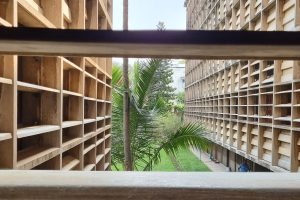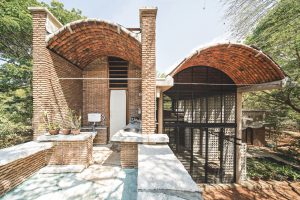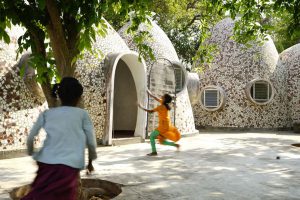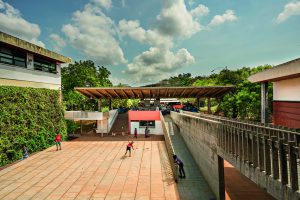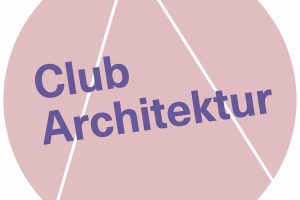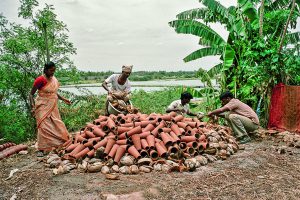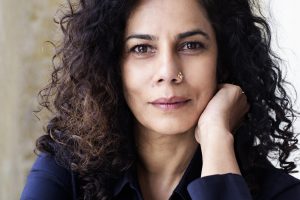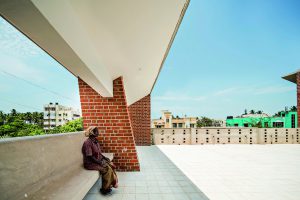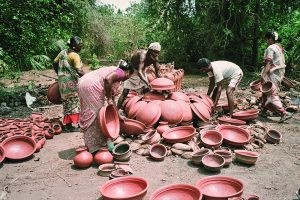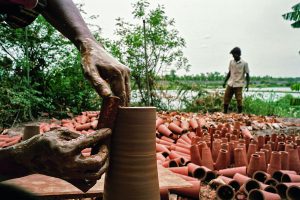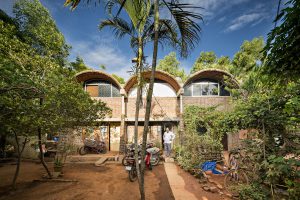Exhibition
Abundance Not Capital. Anupama Kundoo
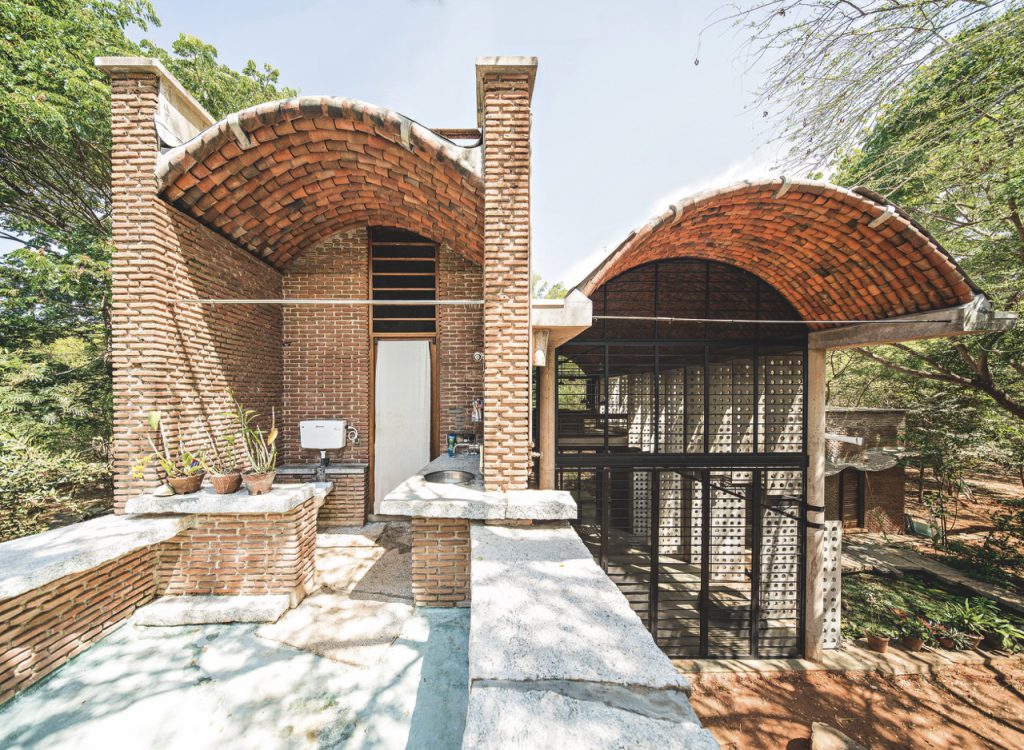
The Wall House creates porous connections between human beings and nature.
Anupama Kundoo: Wall House, Auroville, 2000
© Photograph: Javier Callejas
What if architecture were not an instrument of capital? The exhibition Abundance Not Capital presents the work of Indian-born architect Anupama Kundoo as a manifesto for a different kind of architecture. Using local resources, Kundoo designs buildings of extraordinary beauty that care for the needs of people and the planet.
Architecture has long been a driving force for innovation and growth and has become the materialization of global capital. The insatiable appetite of capital is forcing architecture into a regime of “never enough.” Natural resources and labor are being exploited by the construction industry worldwide. At the same time, many people can no longer afford their homes, which have turned into investment products. How did construction become so destructive to people and nature, and what can architects do to counteract this? Indian-born architect Anupama Kundoo’s oeuvre exemplifies a different kind of architecture. Her work defies the logic of capital and the normative standards of the building industry, as well as binary norms of beauty that require architecture to be either innovative or traditional, either ecological or wasteful.
Anupama Kundoo grew up in Mumbai, where she studied architecture in the late 1980s. In 1989, as globalized urbanization took command of India, she moved to the experimental town of Auroville in South India, where, at the age of twenty-three, she established her office, Anupama Kundoo Architects. She has taught at prestigious universities around the world, exhibited several times at the Venice Biennale of Architecture, and operates offices in Berlin, Mumbai, and Puducherry, but the vast majority of her architectural work can be found in Auroville and Puducherry.
In Anupama Kundoo’s projects, wealth does not lie in precious materials and perfected industrial products, but in the innovative use of materials and techniques that are locally abundant. She accomplishes this through the combination of high-tech and low-tech, the further development of traditional building techniques, inventive lightweight construction methods, and regional material cycles. Her projects are built knowledge for a new relationship between time, money, and materials. The exhibition enables Kundoo’s lively architecture to be experienced sensually and is a call for doing architecture otherwise.
Curators: Angelika Fitz, Elke Krasny
Project coordination and curatorial assistance: Agnes Wyskitensky
Publication: Abundance Not Capital. The Lively Architecture of Anupama Kundoo, edited by Angelika Fitz, Elke Krasny, and Architekturzentrum Wien, The MIT Press, 2025.
Photographs and texts from the curatorial field research of Angelika Fitz and Elke Krasny, together with materials from the architect’s office, create a new framework for the analysis of architecture. Essays by international authors address the issues of architecture and capital, CO2lonialism, working conditions in the construction industry, modernist utopias in urban planning, as well as architectures of care, and provide insights into Indian architectural discourses.
With contributions by Shumi Bose, Jordan H. Carver, Peggy Deamer, Madhavi Desai, Angelika Fitz, Rupali Gupte, Ranjit Hoskote, Elke Krasny, Charlotte Malterre-Barthes, Shannon Mattern, and Laurie Parsons

